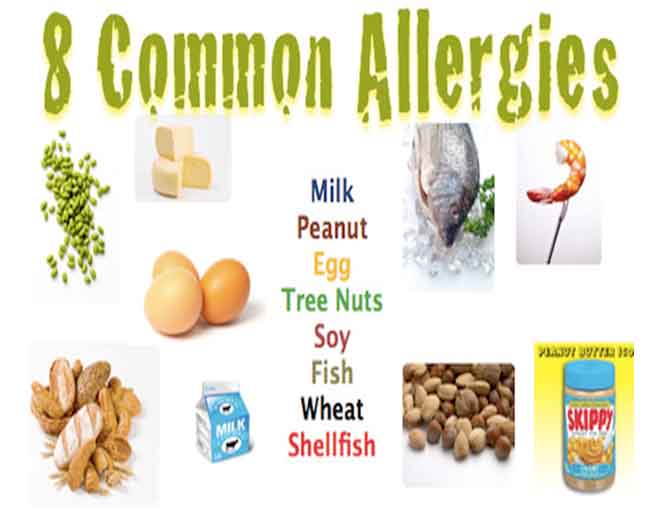
Food Allergy
Introduction
Food allergies occur when the body creates a certain type of antibody called Immunoglobulin E (IgE) to food particles. This antibody is the same type of molecule that results in other types of allergies, such as hay fever, or allergies to bees and medications.
Food allergy occurs in 4 to 6 percent of young children and 3 to 4 percent of adults. It can be a major cause of life-threatening allergic reactions.
A family history of asthma, environmental allergies, eczema or food allergies are all risk factors for children to develop food allergies. A child with a brother or sister who is allergic to peanuts is 10 times more likely to become allergic to peanut compared to the general population.
Some of the most common foods that can cause an allergy are:

• Milk
• Peanuts
• Eggs
• Wheat
• Soybean
• Corn
• Shellfish (Shrimp, Crab, Lobster, Snails, Clams)
• Fish
• Tree nuts (Walnuts, Pecans)
Symptoms:
• Abdominal cramping/pain
• Excessive gas (flatulence)
• Bloating
• Diarrhea or constipation
• Nausea
• Vomiting
• Hives
• Swelling of the eyelids, face, lips or tongue
• Coughing
• Wheezing
• Clearing of the throat
• Difficulty swallowing
• Fatigue
• Dark circles under eyes

Many individuals who think they are allergic to a food may actually have an intolerance or sensitivity to it. Although most symptoms from food intolerance and food allergies are similar, the amount of time it takes to develop a reaction may differ.
If you are allergic to a food, the allergen triggers a response in the immune system right away, usually within 5-15 minutes. If one has intolerance to a food, symptoms may not appear for several hours or even days after consuming a food.
References:
http://www.uptodate.com/contents/food-allergy-symptoms-and-diagnosis-beyond-the-basics
www.foodallergy.org/







